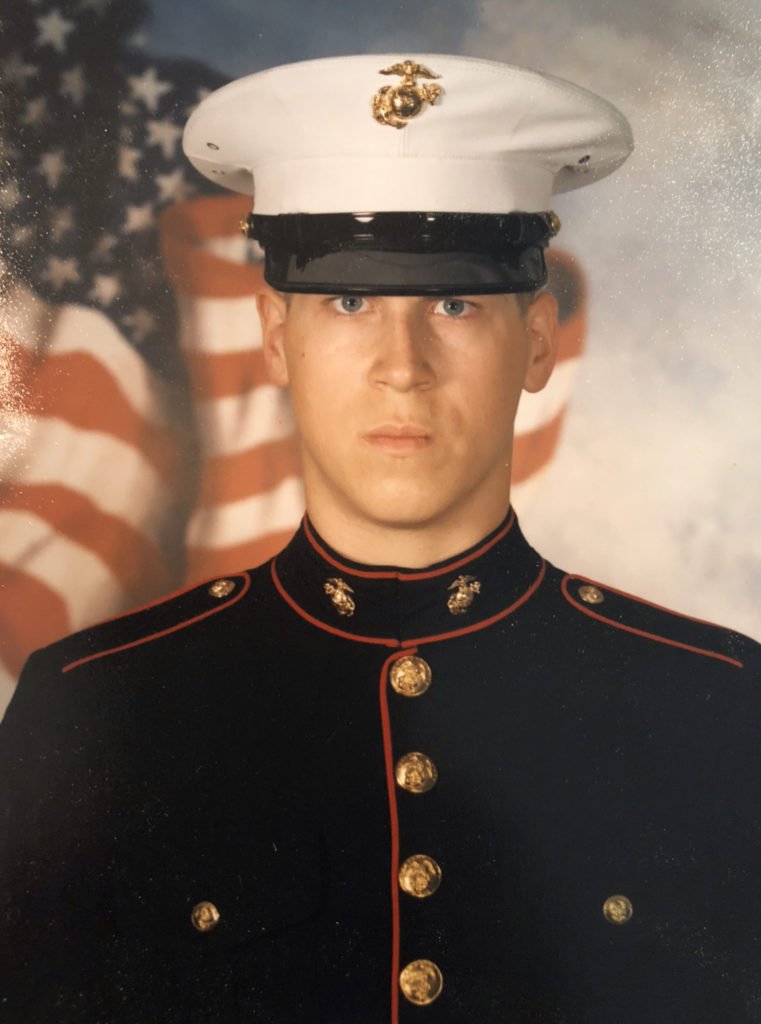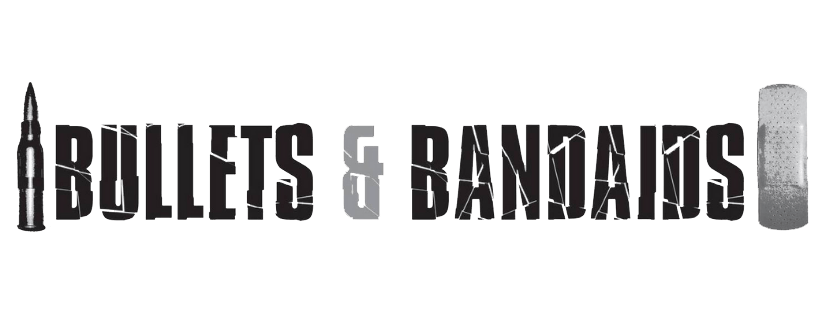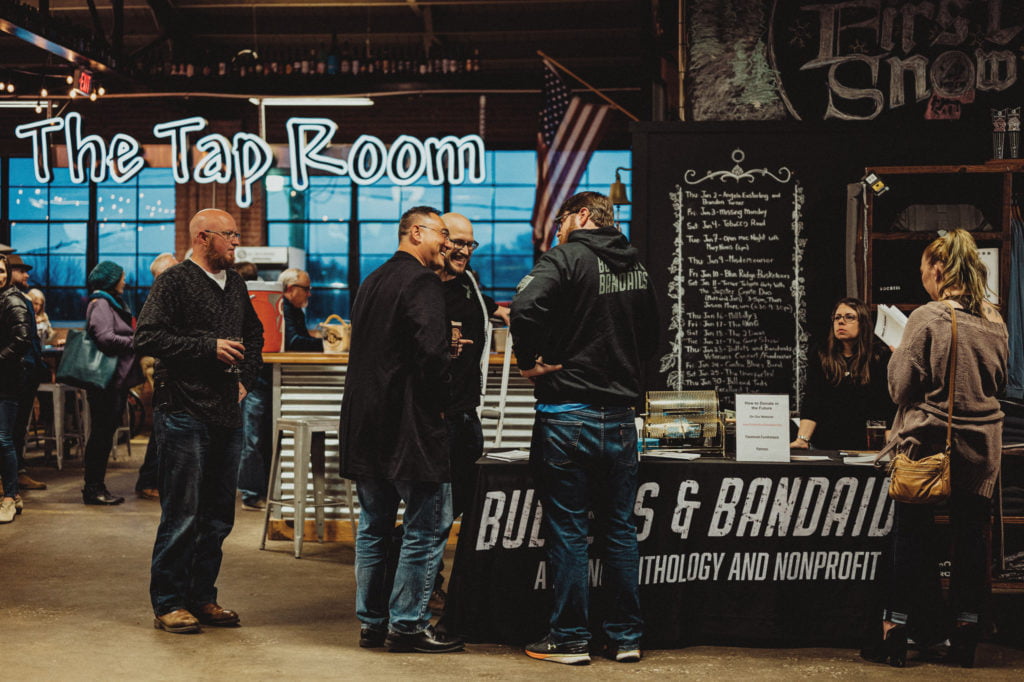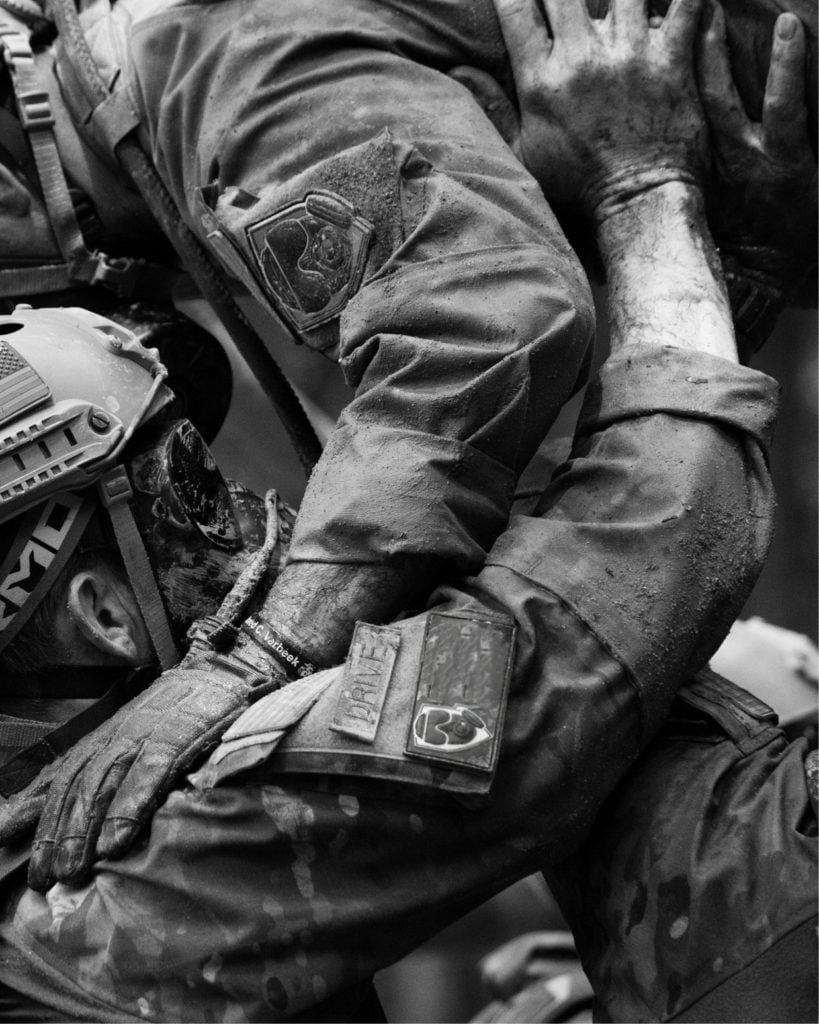
When I first left the Marine Corps infantry in 2004, having two combat tours under my belt, I experienced several common issues of returning veterans. Alcohol abuse, violence, and the sort of despair that can lead to an abrupt finality, the worst part being that I thought I was alone. That the things I had lived through would be a burden to those around me if I were to speak of them.
I had graduated with a bachelor’s degree in Writing for Media Arts and had begun working with artists to create exhibits focused around stories. Sometimes that meant sequential art, sometimes that meant acrylic, but artwork that went along with a context. I had found that the metaphor that artwork presents was able to, through visual conversation, tie people together that would otherwise have never spoken. They shared comments, then ideas, then themselves. It was the sort of interconnectedness that I’d always thought was essential to our social development.
What’s more, we were using these exhibits to raise money for local charities, providing context for those who were in need. Yet even though we put forth so much effort to tell other people’s stories, real or fictional, it took several years for me to even glance at my own.
But one day I was given an opportunity and I took it, having been offered a chance to give a TEDx talk about a moment that happened to me at the embassy in Kabul.
Though I knew I would give it my all, I couldn’t have imagined the profound impact it would eventually have.
Don’t get me wrong. It was rough. No one wants to stare down their own darkness. Their own flaws and failures. But I had reasoned that it would take courage to acknowledge my demons. To own my portion. And sure, there might have been some cry-typing, I’ll admit it. But the sense of relief was almost physical.
It was as though I had let escape a clawing shadow that was ripping its way to freedom from inside my chest. As though I was literally lighter for its departure. It wasn’t a total and perfect fix. I still had a lot to work through, but it was a good start. It helped me feel a semblance of belonging, my friends and family finally given the opportunity to know why I came back changed.
I’d also begun working with artists to create exhibits focused around stories. Sometimes that meant sequential art, sometimes that meant acrylic, but artwork that went along with a context. I had found that the metaphor that artwork presents was able to, through conversation, tie people together that would otherwise have never spoken. They shared comments, then ideas, then themselves. It was the sort of interconnectedness that I’d always thought was essential to our social development.
What’s more, we were using these exhibits to raise money for local charities. It was only a matter of time before one of those charities was veteran-centric. And so, back in 2012, given the opportunity to share the experience I had when I wrote my story, I collected stories from local veterans, paired those stories with local artists, printed out the stories into a book, and put on a fundraising art show.

Armies march off of beans, bullets, and bandaids, but… I couldn’t guarantee food. Bullets and Bandaids would have to do. And it was a hit. It was 4 hours worth of crowds pausing in front of each piece to read the story, then view the artwork based on of it.
However, though it was considered successful for the amount of people that showed up, it was even more so when I heard the comments from both the participants, as well as those that bought tickets. Veterans and civilians, speaking openly about conflict, pain, resilience, and healing.
It was humbling and satisfying to the core of me.
And I felt a little lighter.
As someone who had spent so much time in a world of hyperbolic violence, sometimes self-inflicted, I wanted to dedicate my life to healing. So I did it the only way I knew how. By giving people the agency to speak their truth. To allow their souls to exhale the smoke in their lungs.
To give hope.
“There’s two kinds of good people in this world.
Those that fight off darkness and those that fight toward light.”

By 2016, I had become a fellow at a veteran-centric nonprofit, where the final phase was taking an active step toward bettering our community. As I’m sure you guessed, the second iteration of Bullets and Bandaids was born in. With the knowledge I’d received from the previous show, we were able to reach more veterans, more artists, and this time the book we printed had the artwork next to the story on which it was based.
Again, it was a success, this time as a touring art project, traveling to two different cities in South Carolina. And again, I heard the conversations, saw the understanding, and knew the world was slightly more positive.
Fast forward a few years, a few sore joints that aren’t healing quite as well, and I was back in South Carolina. I had become part owner of a media and production company, but it just wasn’t scratching the itch to help the world in which I lived. I was getting restless, in spite of the workload. And so, on the advice of a friend, Bullets and Bandaids officially became a 501(c)3 nonprofit on March 3, 2019. Just in time to build up momentum before COVID hit.
Once the start of the pandemic began, we were forced to become an online program, rather than a touring one. Though this hobbled us financially, it allowed us to reach for the highest watermark we had when we began, which was to have two people from opposite ends of the same conflict be in one exhibit. We are American combat veteran focused, but we are part of something larger. However, as a touring program that was in its infancy, we simply didn’t have the budget.
But if we’re online, well… that’s a bit different.

So we began collecting stories and artists from around the world. Liberia, the Netherlands, Israel, and Lebanon were represented in the our first touring exhibition, alongside 42 veteran-centric stories from the southeast of the United States.
We did this for the honor we hold for one another and for the potential that lies in each of us, individually and as a whole, at home and abroad.
Through this, we can take an active role in bettering what Carl Sagan called “The only world we’ve ever known.”
Because of this, we are far more than just a nonprofit.
We are a movement.

